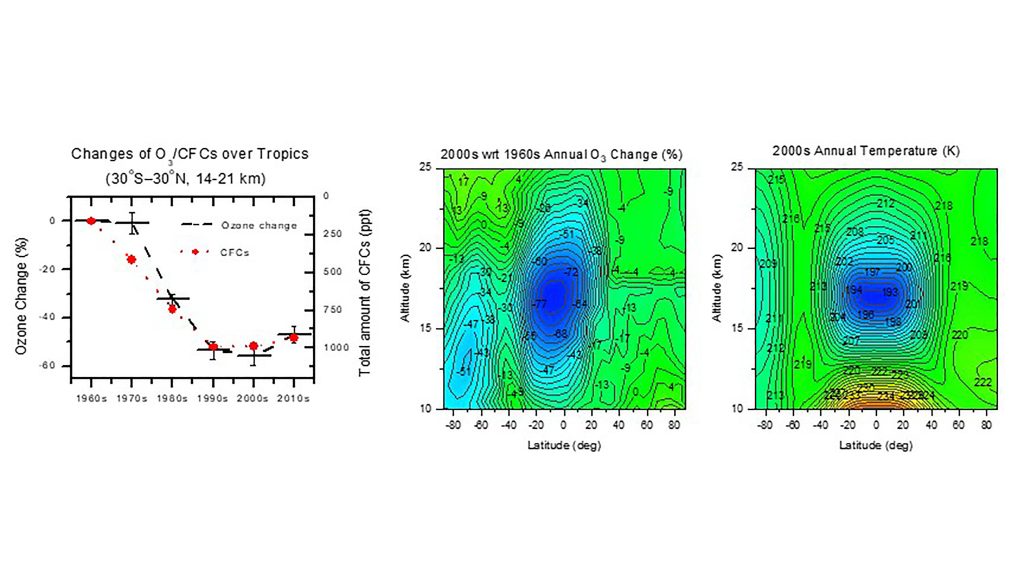From the Journal: AIP Advances
WASHINGTON, July 5, 2022 – An ozone hole, seven times larger than the Antarctic ozone hole, is currently sitting over tropical regions and has been since the 1980s, according to a Canadian researcher.

In AIP Advances, by AIP Publishing, Qing-Bin Lu, a scientist from the University of Waterloo in Ontario, Canada, reveals a large, all-season ozone hole – defined as an area of ozone loss larger than 25% compared with the undisturbed atmosphere – in the lower stratosphere over the tropics comparable in depth to that of the well-known springtime Antarctic hole, but its area is roughly seven times greater.
“The tropics constitute half the planet’s surface area and are home to about half the world’s population,” said Lu. “The existence of the tropical ozone hole may cause a great global concern.
“The depletion of the ozone layer can lead to increased ground-level UV radiation, which can increase risk of skin cancer and cataracts in humans, as well as weaken human immune systems, decrease agricultural productivity, and negatively affect sensitive aquatic organisms and ecosystems.”
Lu’s observation of the ozone hole comes as a surprise to his peers in the scientific community, since it was not predicted by conventional photochemical models. His observed data agree well with the cosmic-ray-driven electron reaction (CRE) model and strongly indicate the identical physical mechanism working for both Antarctic and tropical ozone holes.
As with the polar ozone hole, approximately 80% of the normal ozone value is found to be depleted at the center of the tropical ozone hole. Preliminary reports show ozone depletion levels over equatorial regions are already endangering large populations and the associated UV radiation reaching these regions is far greater than expected.
In the mid-1970s, atmospheric research suggested the ozone layer, which absorbs most of the sun’s ultraviolet radiation, might be depleted because of industrial chemicals, primarily chlorofluorocarbons (CFCs). The 1985 discovery of the Antarctic ozone hole confirmed CFC-caused ozone depletion. Although bans on such chemicals have helped slow ozone depletion, evidence suggests ozone depletion persisted.
Lu said the tropical and polar ozone holes play a major role in cooling and regulating stratospheric temperatures, mirroring the formation of three “temperature holes” in the global stratosphere. He said this finding may prove crucial to better understanding global climate change.
Lu’s discovery builds on previous studies of the CRE-initiated ozone-depleting mechanism that he and his colleagues originally proposed about two decades ago.
“The present discovery calls for further careful studies of ozone depletion, UV radiation change, increased cancer risks, and other negative effects on health and ecosystems in the tropical regions,” said Lu.
###
For more information:
Larry Frum
media@aip.org
301-209-3090
Article Title
Observation of large and all-season ozone losses over the tropics
Authors
Qing-Bin Lu
Author Affiliations
University of Waterloo
